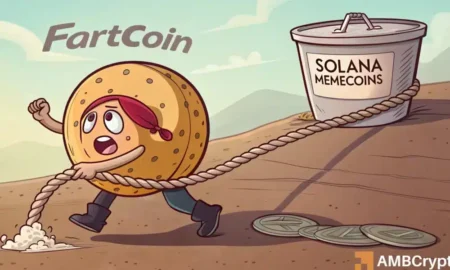Ethereum (ETH) is currently facing significant pressure as long-term holders (LTHs) are selling off their holdings. A recent sell-off by an Ethereum OG saw the liquidation of 7,974 ETH, totaling $11.8 million. This comes after ETH breached critical multi-year support, dropping below $1,500 for the first time in two years. As a result, dormant whales are unwinding their positions, contributing to further downward pressure on the price of ETH.
The exit strategy of these whales seems to reflect a strategic distribution pattern, with gradual sell-offs occurring in installments rather than all at once. This trend can be seen in Ethereum’s LTH NUPL, which has entered the red zone for the first time in three years. This indicator previously signaled a capitulation event in 2022 when ETH fell to $883 after breaking below $1,500. The current situation suggests a similar scenario may be unfolding.
On-chain metrics like the Market Value to Realized Value (MVRV) ratio show that ETH is currently trading at a 24% discount relative to its average acquisition price. Historically, such undervaluation zones have preceded strong recoveries, with ETH rallying by 85% in 2022 after a month-long consolidation. However, market fear, uncertainty, and doubt (FUD) remain a key variable, as Ethereum reserves have seen net inflows of approximately 2 million ETH in April, indicating investor reluctance to buy the dip.
Without a reversal in this accumulation trend, Ethereum is at risk of experiencing deeper corrections below $1,400, especially as dormant whales continue to unwind their positions. The current market structure of Ethereum is reminiscent of its breakdown in 2022, raising the possibility of another capitulation event on the charts. To potentially mitigate this risk, investors will need to closely monitor market sentiment and address any underlying concerns that may be impacting ETH’s price.
In conclusion, Ethereum is currently facing significant selling pressure from long-term holders and dormant whales, leading to a breach of critical support levels and potential undervaluation. While historical data suggests that undervaluation zones have preceded strong recoveries in the past, market FUD remains a major variable that could impact ETH’s price stability. Investors should carefully monitor on-chain metrics and market sentiment to gauge the potential for further downside movements and the likelihood of a full-scale capitulation event on the charts.
















![Is greed pushing Ethereum’s [ETH] 11% recovery, or is fear leading it into a potential trap?](https://cryptonewsinsiders.com/wp-content/uploads/2025/04/Ritika-8-1000x600.webp-450x270.webp)
![Can Chainlink’s [LINK] recent retest turn support into resistance?](https://cryptonewsinsiders.com/wp-content/uploads/2025/04/Renuka-57-1000x600.webp-450x270.webp)